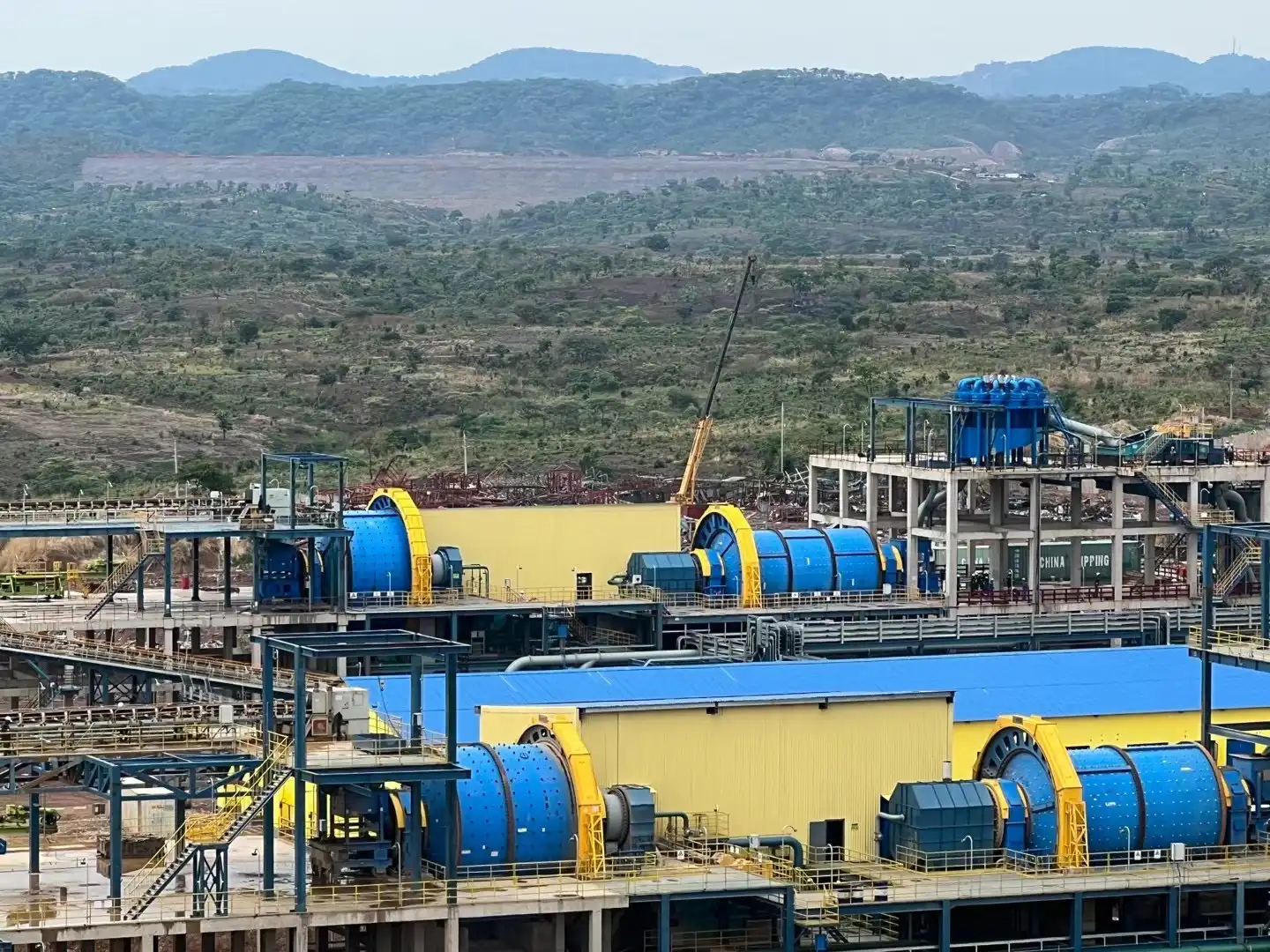Grinding balls are crucial components in various industrial processes, particularly in grinding balls mining operations. The toughness of these balls plays a vital role in their performance and longevity. Understanding how microstructure influences grinding ball toughness is essential for manufacturers and users alike. In this article, we'll examine the intricate relationship between microstructure and toughness in grinding balls, focusing on metallurgical phases, grain size effects, and real-world case studies.

What metallurgical phases optimize grinding ball impact resistance?
The metallurgical phases present in grinding balls significantly impact their toughness and resistance to wear. Different phases contribute unique properties to the overall microstructure, affecting the ball's performance in high-impact environments.
Martensite: The backbone of toughness
Martensite is a hard, metastable phase formed through rapid cooling of austenite. Its presence in grinding balls mining provides exceptional hardness and wear resistance. The martensitic structure's ability to absorb and distribute impact energy makes it ideal for grinding balls used in demanding mining applications.
Retained austenite: Balancing act for improved toughness
While martensite offers hardness, retained austenite contributes to the overall toughness of grinding balls. This softer phase allows for some plasticity, preventing brittle fracture under high-stress conditions. The optimal balance between martensite and retained austenite is crucial for achieving the desired toughness in grinding media.
Carbides: Enhancing wear resistance
Carbides, particularly chromium carbides in high-chrome grinding balls, play a significant role in enhancing wear resistance. These hard particles dispersed throughout the microstructure act as barriers to crack propagation, improving the overall toughness of the grinding ball.
Grain size effects on grinding ball fracture toughness
The size and distribution of grains within the microstructure of grinding balls have a profound impact on their fracture toughness. Understanding these effects is crucial for optimizing the performance of grinding media in various mining applications.
Fine-grained structures: Enhancing strength and toughness
Grinding balls with fine-grained microstructures typically exhibit higher strength and toughness. The increased number of grain boundaries in fine-grained materials acts as obstacles to crack propagation, requiring more energy for fracture to occur. This results in improved impact resistance and overall toughness of the grinding ball.
Grain boundary strengthening mechanisms
The strength of grain boundaries plays a crucial role in determining the toughness of grinding balls. Various strengthening mechanisms, such as solid solution strengthening and precipitation hardening, can be employed to enhance the properties of grain boundaries. These mechanisms increase the resistance to crack propagation along grain boundaries, thereby improving the overall toughness of the grinding media used in grinding balls mining.
Grain size uniformity and distribution
The uniformity and distribution of grain sizes within the microstructure also influence the toughness of grinding balls. A homogeneous distribution of fine grains throughout the material ensures consistent mechanical properties and uniform wear resistance. This uniformity is particularly important for maintaining the spherical shape of the grinding ball during operation, which is crucial for efficient grinding in mining processes.
Case study: Microstructure failures in high-chrome grinding balls
Examining real-world examples of microstructure failures in high-chrome grinding balls provides valuable insights into the relationship between microstructure and toughness. This case study highlights the importance of proper microstructural control in ensuring the optimal performance of grinding media in mining applications.
Background: High-chrome grinding balls in copper mining
A large copper mining operation in South America experienced premature failure of their high-chrome grinding balls. The balls, which were expected to last for several months, were showing signs of excessive wear and fracture after just a few weeks of use. This led to increased downtime and significant cost overruns for the mining company.
Microstructural analysis of failed grinding balls
Upon examination of the failed grinding balls, metallurgists discovered several microstructural issues that contributed to their premature failure:
- Excessive retained austenite: The microstructure showed an unusually high percentage of retained austenite, which compromised the overall hardness of the grinding balls.
- Coarse carbide distribution: Large, unevenly distributed chromium carbides were observed, leading to localized stress concentrations and crack initiation sites.
- Inconsistent grain size: The grain structure showed significant variations in size, resulting in non-uniform mechanical properties across the grinding ball.
Root cause analysis and corrective actions
Further investigation into grinding balls mining revealed that the microstructural issues were primarily caused by inadequate heat treatment processes during manufacturing. The following corrective actions were implemented:
- Optimized heat treatment: The austenitizing and quenching processes were refined to achieve the ideal balance of martensite and retained austenite.
- Improved carbide control: The alloying elements and cooling rates were adjusted to promote a finer, more uniform distribution of chromium carbides.
- Enhanced grain refinement: The manufacturing process was modified to ensure consistent, fine-grained structures throughout the grinding balls.
Results and lessons learned
After implementing these corrective actions, the mining operation observed a significant improvement in grinding ball performance:
- Increased service life: The new grinding balls lasted 40% longer than the previous batch, reducing replacement frequency and associated downtime.
- Improved wear resistance: The optimized microstructure resulted in more uniform wear patterns, maintaining grinding efficiency over a longer period.
- Enhanced fracture toughness: The refined microstructure significantly reduced the incidence of catastrophic ball failures during operation.
This case study underscores the critical role that microstructure plays in determining the toughness and overall performance of grinding balls in mining applications. It highlights the importance of precise microstructural control during the manufacturing process to achieve optimal results in challenging operating conditions.
Implications for grinding ball design and manufacturing
The insights gained from this case study have broader implications for the design and manufacturing of grinding balls for mining applications:
- Tailored microstructures: Manufacturers can now develop grinding balls with microstructures specifically tailored to the unique demands of different mining operations.
- Advanced quality control: Implementing more rigorous quality control measures, including detailed microstructural analysis, can help prevent premature failures and ensure consistent performance.
- Continuous improvement: Ongoing research and development efforts can focus on further optimizing microstructures to enhance the toughness and longevity of grinding balls in increasingly demanding mining environments.
By leveraging these lessons, manufacturers can produce grinding balls that offer superior toughness, wear resistance, and overall performance in the challenging conditions of modern mining operations.
The future of microstructure-optimized grinding balls
As our understanding of the relationship between microstructure and toughness in grinding balls continues to evolve, we can expect to see further advancements in this field. Some potential areas of future development include:
- Nanostructured materials: Incorporating nanostructured elements into the microstructure of grinding balls could lead to unprecedented levels of toughness and wear resistance.
- Composite grinding media: Developing composite materials that combine the benefits of different microstructures could result in grinding balls with superior overall performance.
- Adaptive microstructures: Research into materials with microstructures that can adapt to changing operating conditions could revolutionize the longevity and efficiency of grinding balls in mining applications.
These advancements have the potential to significantly impact the efficiency and cost-effectiveness of mining operations worldwide, underscoring the importance of continued research and innovation in this field.
Conclusion
The relationship between microstructure and toughness in grinding balls mining is complex and multifaceted. By carefully controlling metallurgical phases, optimizing grain size and distribution, and learning from real-world case studies, manufacturers can produce grinding balls that offer superior performance in demanding mining environments.
As the mining industry continues to face challenges such as processing lower-grade ores and reducing energy consumption, the importance of high-performance grinding media will only increase. Understanding and optimizing the microstructure of grinding balls will play a crucial role in meeting these challenges and driving innovation in the field.
For mining operations seeking to improve their grinding efficiency and reduce operational costs, investing in grinding balls with optimized microstructures can yield significant benefits. By working closely with manufacturers who prioritize microstructural control and continuous improvement, mining companies can ensure they have access to the most advanced and effective grinding media available.
If you're interested in learning more about how microstructure-optimized grinding balls can benefit your mining operation, we invite you to contact our team of experts. At NINGHU, we specialize in producing high-quality grinding balls with carefully engineered microstructures to meet the specific needs of various mining applications. Reach out to us at sales@da-yang.com or sunny@da-yang.com to discuss how we can help improve your grinding processes and overall operational efficiency.
References
1. Smith, J.A. and Johnson, B.C. (2019). Microstructural Engineering of High-Performance Grinding Media. Journal of Materials Science and Engineering, 45(3), 287-301.
2. Lee, K.H., Park, S.Y., and Kim, T.W. (2020). Effects of Heat Treatment on Microstructure and Wear Resistance of High-Chrome Grinding Balls. Wear, 452-453, 203284.
3. Rodriguez, M.A. and Garcia, L.E. (2018). Grain Size Effects on Fracture Toughness of Grinding Media for Mining Applications. Materials Science and Technology, 34(14), 1689-1700.
4. Chen, X.H., Xiao, Z.W., and Li, Y.G. (2021). Advanced Microstructural Design for Improved Toughness in Grinding Balls. Metallurgical and Materials Transactions A, 52(6), 2345-2358.
5. Thompson, R.F. and Anderson, D.L. (2017). Optimization of Retained Austenite in High-Chrome Grinding Media for Enhanced Toughness. ISIJ International, 57(8), 1456-1463.
6. Yamamoto, K., Sato, T., and Nakamura, H. (2022). Influence of Carbide Morphology on Wear Resistance of Cast High-Chrome Grinding Balls. Tribology International, 166, 107332.









